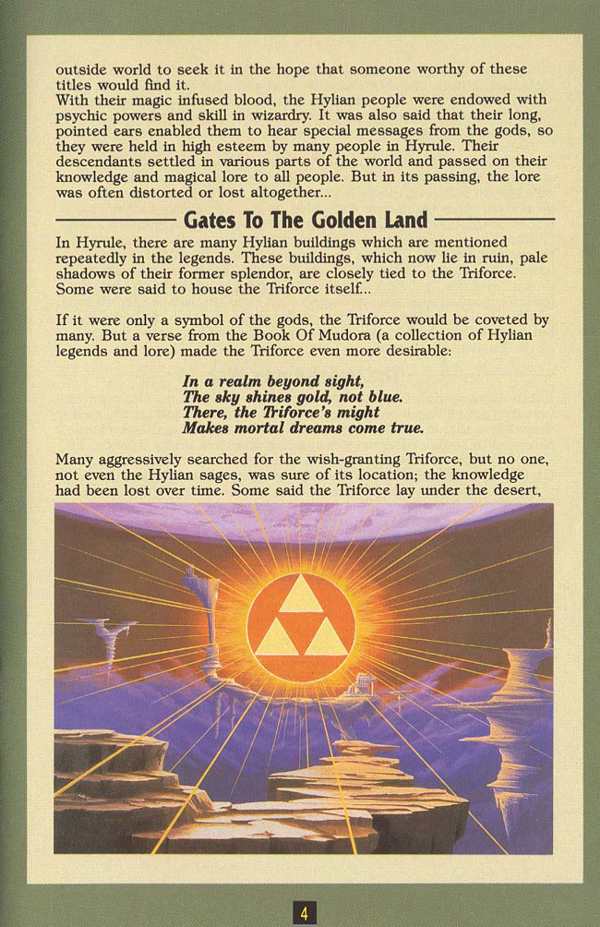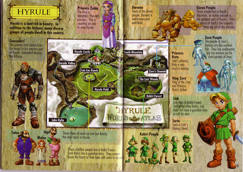(In
light of the arrival of The Legend of
Zelda: Breath of the Wild for Nintendo’s new Switch console, here are some
initial thoughts on the series as a whole.)
Nintendo’s
The Legend of Zelda series is defined
by the idea of the labyrinth. Both the
overworld and the various temples, dungeons, etc. serve as labyrinths. But a labyrinth has a specific purpose: to initiate those who are worthy into the
inner mysteries or beliefs or ways of a group of people, usually a religious
group.
‘Which
way to go?’ From https://www.zeldadungeon.net/the-legend-of-zelda-walkthrough/level-1-the-eagle/,
17 March 2017
On
its surface, Legend of Zelda is an
adventure game wherein the player saves a princess and her kingdom from an evil
usurper and his minions. Beneath this
outer layer, it seems more than likely that this series of games (particularly
those in the main canon of the games where Zelda, Ganon, Link, and the Triforce
are involved) is Gnostic theology dressed up in fictional form.
Let
us run through some of the basics of the heresy of Gnosticism first and then
see how they are presented in LoZ.
In many Gnostic systems (and heresiologies), God is
known as the Monad, the
One.[note
13] God is the high source of the pleroma, the region of light. The
various emanations of God are called æons. According to Hippolytus, this view
was inspired by the Pythagoreans, who called the first thing that came into
existence the Monad, which begat the dyad, which begat the numbers,
which begat the point, begetting lines,
etc.
https://en.wikipedia.org/wiki/Gnosticism#Concepts,
13 March 2017
Almost
all Gnostic systems of the Syrian or Egyptian type taught that the universe began
with an original, unknowable God, referred to as the Parent or Bythos, or as the Monad by Monoimus. From
this initial unitary beginning, the One spontaneously emanated
further Aeons,
being pairs of progressively 'lesser' beings in sequence. Together with the
source from which they emanate they form the Pleroma, or
fullness, of God, and thus should not be seen as distinct from the divine, but
symbolic abstractions of the divine nature. The transition from the immaterial
to the material, from the noumenal to the sensible, is brought about by a flaw,
or a passion, or a sin, in one of the Aeons.
In
most versions of the Gnostic mythos, it is Sophia who brings about this
instability in the Pleroma, in turn bringing about the creation of materiality.
According to some Gnostic texts, the crisis occurs as a result of Sophia trying
to emanate without her syzygy or, in another tradition, because she tries to
breach the barrier between herself and the unknowable Bythos. After
cataclysmically falling from the Pleroma, Sophia's fear and anguish of losing
her life (just as she lost the light of the One) causes confusion and longing
to return to it. Because of these longings, matter (Greek: hylē, ὕλη) and soul (Greek: psychē,
ψυχή) accidentally come into existence. The creation of the Demiurge (also
known as Yaldabaoth, "Son of Chaos") is also a mistake made during
this exile. The Demiurge proceeds to create the physical world in which we
live, ignorant of Sophia, who nevertheless manages to infuse some spiritual
spark or pneuma
into his creation.
In
the Pistis Sophia, Christ is sent from the Godhead in
order to bring Sophia back into the fullness (Pleroma). Christ enables her to
again see the light, bringing her knowledge of the spirit (Greek: pneuma,
πνευμα). Christ is then sent to earth in the form of the man Jesus to give men
the Gnosis
needed to rescue themselves from the physical world and return to the spiritual world.
In Gnosticism, the Gospel story of Jesus is itself allegorical: it is the Outer
Mystery, used as an introduction to Gnosis,
rather than being literally true in a historical context. For the Gnostics, the
drama of the redemption of the Sophia through Christ or the Logos is the central
drama of the universe. The Sophia resides in all of us as the Divine
Spark.
From the initial unitary beginning, the One
spontaneously emanated further Aeons, pairs of progressively "lesser"
beings in sequence. The lowest of these pairs were Sophia and Christ. The Aeons
together make up the Pleroma, or fullness of divinity and thus should not be
seen as identical with God nor as distinct from the divine, but as embodied
divine emanations.[citation needed]
https://en.wikipedia.org/wiki/Gnosticism#Emanation,
13 March 2017
The
basic Gnostic myth has many variations, but all of these refer to Aeons,
intermediate deific beings who exist between the ultimate, True God and ourselves.
They, together with the True God, comprise the realm of Fullness (Pleroma)
wherein the potency of divinity operates fully. The Fullness stands in contrast
to our existential state, which in comparison may be called emptiness.
One
of the aeonial beings who bears the name Sophia (“Wisdom”) is of great
importance to the Gnostic world view. In the course of her journeyings, Sophia
came to emanate from her own being a flawed consciousness, a being who became
the creator of the material and psychic cosmos, all of which he created in the
image of his own flaw. This being, unaware of his origins, imagined himself to
be the ultimate and absolute God. Since he took the already existing divine
essence and fashioned it into various forms, he is also called the Demiurgos or
“half-maker” There is an authentic half, a true deific component within
creation, but it is not recognized by the half-maker and by his cosmic minions,
the Archons or “rulers”.
http://gnosis.org/gnintro.htm,
13 March 2017
Gnosticism commonly held that "salvation is to
escape from the bondage of the material existence and travel back to the home
from which souls/spirits have fallen." God initiates salvation because he
wants to draw back the stray bits and pieces of himself, and so he sends forth
an emanation of himself - "a spiritual redeemer" - who comes down
from heaven and gives an attempt to teach some of the "divine sparks of
Spirit" what their true identity is and where their real home lies. Once
they are awakened by this redeemer they can then begin their journey back home.
"Salvation is by knowledge - self-knowledge."
https://www.theopedia.com/gnosticism,
13 March 2017
Condensing
this down further, we see these main ideas:
-A
single god who dwells in a region of light.
-A
pair of emanated beings from this god, Sophia and her consort. Sophia is the inner life of the cosmos.
-From
Sophia comes the Demiurge, who, thinking he his god, with the help of the
divine essence, tries to fashion worlds, people, etc. from the material made by
Sophia according to his own plans.
-Pieces
of the one divine god have become trapped in material bodies and must be freed
from them to be reunited with the monad.
-The
other person in the aeonial pair who existed with Sophia in the pleroma of the
monad comes, undoes the work of the Demiurge, and reunites Sophia and the other
scattered divine sparks with the monad, thus bringing salvation to the world.
In
the LoZ, these are presented in the
following way.
-The
Triforce, the essence of the goddesses who created the world, is left behind in
the Golden Land, a land of light, to be the ruling
power in the world. It is the monad.
The
Triforce-monad, from http://www.kasuto.net/zelda3.php?main=zelda3/z3graphical_manual.html,
15 March 2017
-Princess
Zelda, the ruler of Hyrule, like Sophia, is a symbol of the world-soul, the one
who gives life to the world.
-Ganon
is the Demiurge, who, with the essence of the goddesses in the Triforce,
attempts to remake and rule the world.
-Part
of the Triforce is shattered, its pieces being scattered throughout the world
(the Gnostic ‘sparks of divinity’), in the hopes of being found and reunited by
a worthy hero.
-Link,
Zelda/Sophia’s syzygy or consort, appears, reunites the Triforce shards,
overthrows Ganon, and returns Zelda and her kingdom to their rightful order.
Sophia,
savior, and demiurge, from http://www.kasuto.net/zelda64.php?main=zelda64/oot_graphical_manual.html,
15 March 2017
The
kinship between the Gnostic system and LoZ
is further strengthened by Link’s ‘descending’ oftentimes into dungeons, etc.
in his efforts to reunite the Triforce pieces, just as the Gnostic savior must
‘descend’ into the material world from the spiritual pleroma to free the
trapped divine sparks.
Laying
hands on a divine spark of the monad, from https://www.zeldadungeon.net/the-legend-of-zelda-walkthrough/level-1-the-eagle/,
17 March 2017
As
we said at the outset, the labyrinth theme dominates throughout The Legend of Zelda. And now we can say with some confidence what its
deeper meaning is: You are being
initiated into Gnosticism.
--
Holy
Ælfred the Great, King of England, South Patron, pray for us sinners at the
Souð!
Anathema
to the Union!




It's of universal design that we have reached an age of illumination and video games are the ultimate form of religious codices, therefore... I am a gnostic and I approve of mythologizing and fictionalizing our accounts such that educational tools can be crafted to liberate humanity from the bondage imposed by the bloodthirsty Christian cults through time. I was a child indoctrinated into Christianity once, and that cult is so inundated with baggage that alternate forms of deprogramming mind control are necessary. Gnosticism fits all gaps nicely. It is a religion for future humanity <3
ReplyDelete